Since their discovery, the tomb doors of Castelluccio have been the object of careful study to decipher their iconographic and symbolic meaning.
They served as a closure to three of the 200 tombs, nos. 31, 34 and 22 of the necropolis found on the rocky sides of the Cava della Signora, in the village of Castelluccio near Noto (SR), a site that gave its name to the most widespread and richest of the cultures of the early Sicilian Bronze Age (2300-1700 B.C).
The doors of tombs 31 and 34 are made up of stone slabs in which one of the faces is carved with bas-reliefs depicting spiral anthropomorphic geometric motifs, with a more complex elaboration in the door of tomb 31 (decorated with two spirals side by side at the top ending below with a divarication in which a scissor element is inserted) and an extreme schematization in that of tomb 34.
The doors of tomb 22, on the other hand, present an elaborate closing system consisting of two slabs: the front external one, smaller, has the upper part with a 'U'-shaped recess, flanked by two symmetrical breast-shaped ashlars below the 'recess and projecting towards the outside of the tomb; in the rear slab there is instead an oval protuberance that fits into the hollow of the previous one.
These doors are the only evidence of sculptures from the Castelluccio period.
Luigi Bernabò Brea was the first to hypothesize that the bas-reliefs of tombs 31 and 34 could represent the schematization of the sexual act; further studies instead agree in affirming that the representations expressed a decidedly symbolic meaning connected to propitiatory and devotional cults of regeneration and/or protection and that the paired spirals represented the breasts or the eyes.
As the valuable work of Marija Gimbutas reveals, the pictorial association of eyes with snakes and the representation of eyes through snake coils were widespread phenomena throughout Old Europe as far back as the Paleolithic.
Serpent coils, as a metaphor for the Eyes of the Goddess, appear, singly or conjoined (in a double spiral), as a decorative motif on Old European pottery, temples and tombs in France, Spain, Portugal and Brittany, often in association with the symbolic signs of chevrons, zigzags and parallel lines. To these signs is also added that of the eyebrows depicted with stylized ram's horns, an animal sacred to the Goddess as her horns twisted like a snake are a symbol of fruitful energy. And it is precisely in the doors of Castelluccio that Gimbutas believes that the metaphor oculi/snake-spiral/ram's horns is expressed iconographically.
Orsi and Bernabò Brea immediately noted that the motif of the spiral present in the hatches has clear connections with other areas of the Mediterranean, both from a symbolic and iconographic point of view. Further studies offer comparisons, among the many possible ones, with the Maltese megalithic temples of the Tarxien facies, and in particular with the hypogeum of Hal Saflieni, where spirals with opposite directions of rotation occur as in the present case, and with the majestic passage tomb of Newgrange in Ireland: both share with Castelluccio the presence of single, double and even triple serpentine spirals carved into the portals.
We also find the double spiral in Mesopotamia, as a symbol of the Sumerian goddess Ninhursaga, one of the most powerful goddesses of the third millennium BC, the only one with many names, including Nintur, Lady of birth and childbirth; it is still used today by Egyptian women as an amulet in the form of a double spiral placed side by side, with a protective-apotropaic value and safeguarding and caring for birth. In Italy, the simple, double or hooked spiral appears widely and widely in Sardinia in the tombs with artificial caves of the typehouse of janas> of the culture of Ozieri, while in Puglia in cave of Porto Badisco paintings of zoomorphic figures have been found whose limbs end in snake coils.
The analysis of the architecture of the tombs, for which the doors served as a closure, offers further useful information for exploring the religious beliefs of the Castelluccian population on the concepts of life, death, passage and rebirth.
Excavated in the steep rocky walls of the various settlements, they are in most cases tombs in simple artificial caves, often preceded by an antechamber called 'anticella', generally ovoid in shape, through which, through a second opening, one enters the sepulchral cell. with circular or elliptical plan and domed or truncated cone ceiling.
Some tombs have a monumental architecture with pillared facades or fake pillars, with exedra-shaped pavilions containing one or more cells.
The cave tombs were common sepulchres and could accommodate dozens of people buried, in some cases even exceeding a hundred. In most cases they were deposited in the fetal position: this denotes how already since the Neolithic the processes of death and passing were understood as parts of a larger cyclical process in which the new life grows on the remains of the old one, and the birth it was part of a cycle that included death; the womb of the goddess, the source of birth, is likewise the source of death: not mere death, but death and regeneration.
In a symbolic sense, says Gimbutas, the individual returned to the womb of the goddess to be reborn, although the form this rebirth was imagined to take is unknown. “The female womb [...] constitutes one of the most powerful funerary motifs, one can think of the womb as a tomb (tomba as womb)”, with a clear connection to the cult of Mother Earth widespread among all the populations of Europe and Anatolia. Caves, cracks and caverns of the Earth represent the natural manifestations of the primordial womb of the Mother. Similarly, in Old Europe some buildings were designed to serve as both tombs and shrines and were shaped like a female body. Also in Castelluccio the anteroom, or the corridor carved into the rock that sometimes led to the cell, was probably the architectural representation of the birth canal.
Burying in the womb represents an act analogous to planting a seed in the earth and it was therefore natural that a new life would be expected to arise from the old one.
Often the tombs were not only the place where the deceased people rested, but they also housed rituals of an initiatory or curative type or of seasonal significance, since in ancient Europe, and for most of prehistory, religion and daily life were intimately mixed, the sacred was not separated from the profane, every activity was imbued with a sacred force.
Outside the tombs, near the door, a vase was often placed which was to serve as a link between the realm of the living and the realm of the dead as a probable container for periodic offerings by the relatives of the deceased.
In tomb 34 deer bones were also found contained in a multi-handled jar: this suggests the performance of collective magical-religious rituals which served to symbolically promote the cycle of life and regeneration.
In addition to the objects already listed in the Castelluccian tombs, numerous vases, amulets in jadeite and various stones in the form of pendants, tiny lithic models such as axes, beads, pierced shells, numerous terracotta objects in the shape of horns or phalluses (to be identified with protector deities of the domestic hearth), and seven specimens of which to this day remain a small mystery of archaeology.
Perhaps a more in-depth study of the funerary objects of the Castelluccian tombs, with an eye that also takes into account the interpretation of Gimbutas, could reveal surprising aspects of this culture, as the zig-zag, chevron and M sign geometric decorations of the same suggest tombs, or engraved in the artifacts found in them, and in the fragments present in the drains of the village.
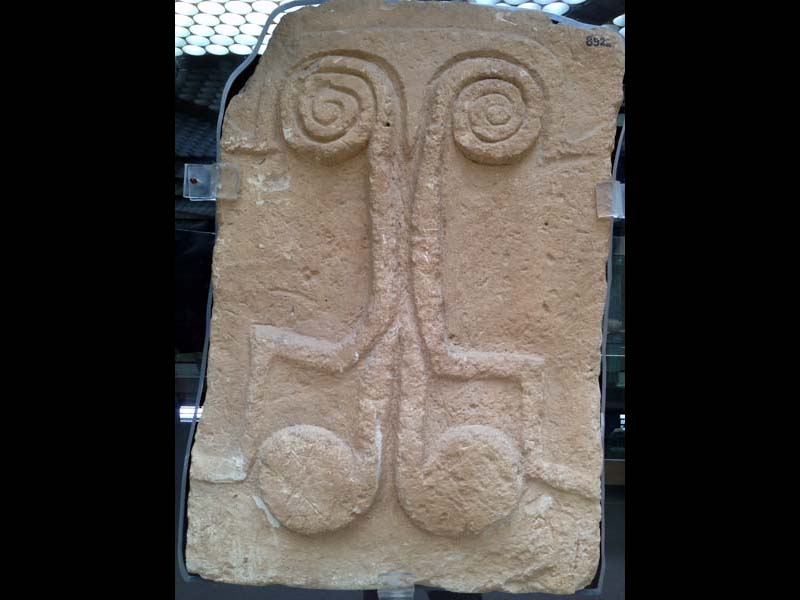
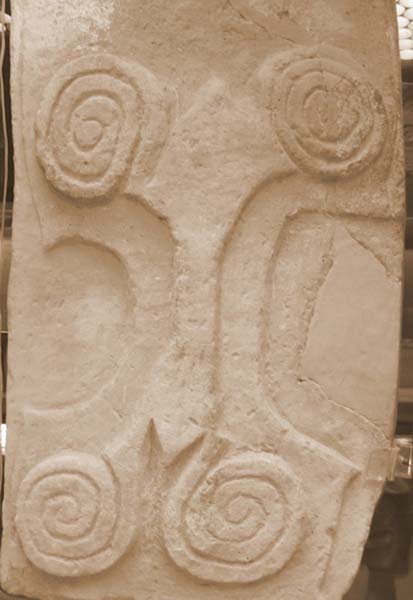
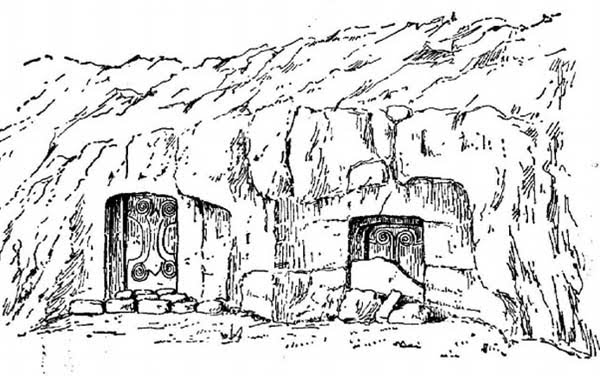
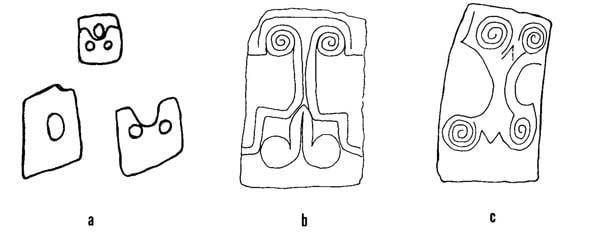
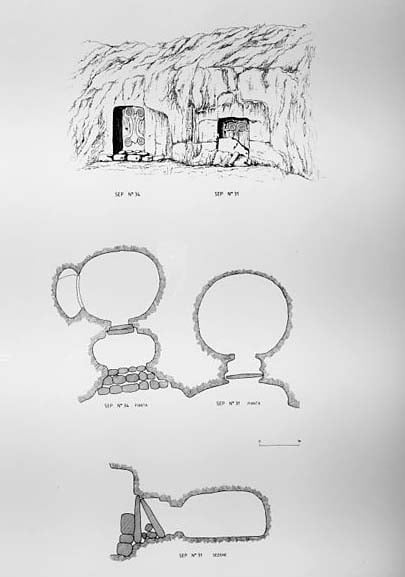
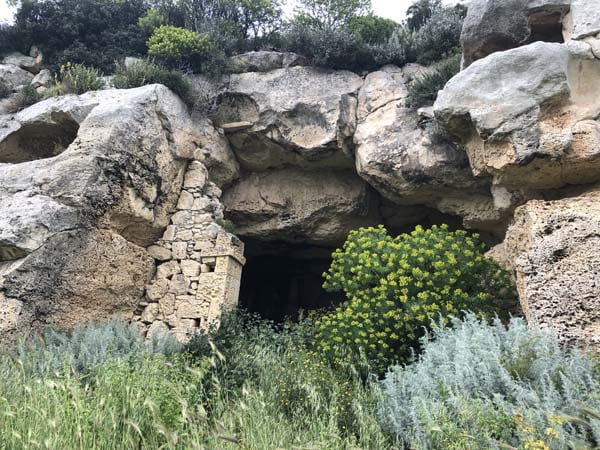
Historical notes
The excavation campaign in the village of Castelluccio, on the rocky sides of the Cava della Signora, began on 24 June 1890 by Paolo Orsi, 3rd class inspector of the excavations, museums and galleries of the kingdom.
Orsi was an innovator not only of the excavation methodology but above all for the adoption of new scientific techniques, in particular the natural sciences, palethnology and anthropology. Until 1888 in Sicily most of the archaeological excavations had been conducted on the Greek necropolises while the monuments and "archaeological relics" of pre-Hellenic Sicily remained absolutely unexplored, as he himself notes.
CARD
LATEST PUBLISHED TEXTS
VISIT THE FACTSHEETS BY OBJECT

